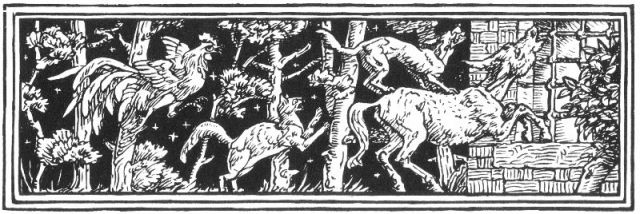
Source: Household Stories by the Brothers Grimm, Lucy Crane. Project Gutenberg.
Now that you know about some common organizational patterns, you can use them to help you understand what you read.
The short passage below uses problem and solution organization. What clues do you need to look for to determine whether a passage is organized by problem and solution? First, you’ll need to identify the problem that the author is trying to solve.
Click on the bolded text to reveal think-alouds about the information in the sentences.

This is the problem.
Suburban neighborhoods are attractive to wild animals because it can be easier to live there than in the forest.
This sentence explains further why wild animals might want to live in the city.
Then, you’ll need to identify the solution or solutions proposed by the author.
This sentence introduces the idea of a solution.
One way to keep the wild animal population down is to control the food source.
This is a solution to the problem.
For example, putting high fences around yards will keep animals from destroying yards and gardens and take away a food source.
This sentence really solves the problem by explaining how to control the food source.
The main idea isn’t stated. We had to put all the information together using the author’s problem and solution to come up with the main idea for the passage: There are some things we can do to stop wild animals from coming into suburban neighborhoods.
The next passage is organized by proposition and support. With this type of organization, once you figure out the author’s proposition, or claim, you have figured out the main idea of the text.

Source: The Tale of Peter Rabbit, Virginia Albert.
Project Gutenberg
The word “rabbit” may call to mind images of the Easter Bunny, but wild animals in areas where people live are more than cute and fluffy.
This sentence introduces the author’s next sentence.
Wild animals in the suburbs can be a costly nuisance.
This is the proposition, or claim, and it is also the main idea in a proposition-and-support organizational pattern, but let’s see how you might figure that out if you were unsure.
Rabbits dig up gardens and raccoons knock over garbage cans looking for food.
This sentence provides support for the proposition.
It is estimated that wildlife causes millions of dollars of property damage each year.
This is a fact and even more specific support for the proposition.
If you look at the supporting details, you can infer that the main idea probably has something to do with wild animals costing residents a lot of money.
Next, you’ll practice identifying the organizational pattern of a passage on your own.